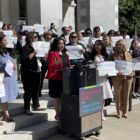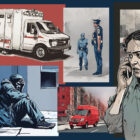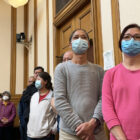City Hall
Inadequate Language Services Leave Immigrants in the Dark at SF Public Meetings
For immigrants and other San Francisco residents who speak little English, accessible and robust interpretation services are essential in order to understand what’s said at public meetings and communicate with officials.
The city claims to have the strongest language-access policies in the nation, and a new proposal is on the way to strengthen them further. But, in practice, those policies leave a communication gap between lawmakers and those affected by their laws, community groups say.










